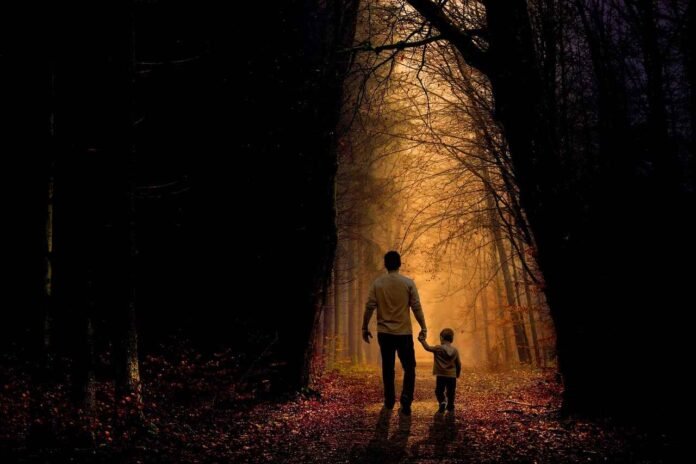Kids Film Photography Tips
I didn’t plan on teaching film photography to a kid. Honestly, I barely felt confident teaching it to adults. But one Saturday morning, my son wandered into the living room while I was loading film into my old Pentax K1000. He watched quietly for a few seconds and then said, “Can I try that?”
That’s how all of this started.
I said yes, thinking it would be a harmless little experiment. I had no idea it would turn into a months-long ritual , the two of us carrying old cameras, stopping at random corners, negotiating over compositions, arguing over light, laughing over blurry frames, and learning far more than I expected.

Somewhere in the middle, my nephew joined in too. And that’s when things got hilariously chaotic two kids, one film camera each, and only one adult pretending to know exactly what he was doing.
From all of that… these are the tips that came out naturally. Not from theory, but from messy, real practice.
Table of Contents
1. Start With a Camera That Doesn’t Fight Them

The first mistake I made was giving my son a camera that was slightly too heavy and intimidating. He looked excited until he tried to hold it steady. Then his excitement dropped straight into frustration.
Later, when my nephew joined us, I gave him a small point-and-shoot , a simple Olympus Stylus.
The difference was HUGE.
My son struggled with shutter speeds and focus distance. My nephew? He just pointed, pressed, and grinned.
That’s when I learned:
Kids don’t need a complicated machine. They need a camera that gets out of their way.
When they are comfortable, then you can slowly introduce manual controls. But if you overwhelm them at the start, the interest evaporates faster than you think.
2. Teach “Light Before Lens” : A Lesson Kids Actually Understand

One day, we were in the park under harsh mid-day sun. My son kept asking why his shots might come out too bright. I started giving a technical explanation… and halfway through, I could see his eyes drifting into another dimension.
So I changed tactics.
I asked him,
“Look at my face. Is the sun too bright right now?”
He squinted and nodded.
Then I said,
“That’s what the film is feeling too. It’s squinting.”
Something clicked.
From that day on, every time he lifted the camera, he took one second to notice the light. Not the shutter. Not the aperture. Just the light.
It became a habit for both kids look up first, then look through the camera.
That one tiny shift improved their photos more than any technical lesson ever could.
3. Let Them Waste the First Roll (They Need That Freedom)
The first roll of film kids shoot shouldn’t be “guided.”
It shouldn’t be “perfect.”
It shouldn’t even make sense.
It should be theirs , fully theirs.
My son’s first roll was full of:
- benches
- one blurry dog
- a close-up of his shoe
- an accidental shot of the sky
- and a picture of my back
My nephew’s roll was even funnier he tried to photograph a squirrel and ended up with three frames of empty grass.
But after that, something beautiful happened.
They reviewed the photos (well, the scans), laughed at them, and then said:
“Okay… next time I want to try something else.”
That’s the point.
Kids learn by doing, not by being micromanaged.
4. The “One Story, One Roll” Technique
At some point I realized the kids were shooting everything trees,cats, cars, random shadows. Very random. At the end, none of it felt intentional.

So I suggested a game:
One roll = one story.
The first time, my son’s story was:
“Things that look lonely.”
He photographed:
- a single swing on a playground
- a bench with no one on it
- a bird sitting alone on a wire
My nephew chose:
“Things that move fast.”
He chased:
- cars
- bicycles
- pigeons
- even me, when I walked too quickly
Their photos suddenly had purpose. Emotion showed up. A sense of direction appeared.
Kids love stories.
Film loves stories.
Put those together magic.
5. Don’t Fix Their Mistakes… Help Them Notice Them
Kids don’t need perfection.
What they crave is ownership.
When my son took a picture that came out underexposed, I didn’t correct him on the spot. Instead, when we reviewed the scans, I asked:
“What do you think happened here?”
He looked at the darker photo for a few seconds and said:
“I think I forgot to check the light.”
That moment was more powerful than any explanation I could give.

Same with my nephew. He once shot a portrait where half the face was cut off. I didn’t tell him it was wrong. I simply asked:
“Do you like this framing? If you do, why?”
He shrugged and said,
“I think I went too close.”
Learning happened.
But he owned it.
Mistakes are teaching tools, never censor them.
6. Show Them the Darkroom or the Scanning Process
Kids are fascinated by watching something invisible turn into something real.
The first time we developed film at home, both kids stood so close to the table that I worried someone would knock over the chemicals. Their excitement was genuine almost dramatic.
When the negatives dried, they held them to the window like relics.
And they said something unexpected:
“I didn’t know it takes so much work.”
From that moment on, they started shooting more carefully.
Film is slow.
Film has effort behind it.
Kids understand effort when they see it.
7. Give Them a Mini “Assignment” During Every Outing
One Sunday morning, right before leaving the house, I said:
“Today’s challenge: Only vertical photos.”
My nephew groaned. My son smirked.
But outside, they both started thinking differently.
Another day I told them:
“No looking through the viewfinder for the first three shots ,shoot from the waist.”
Or:
“All shots must include something red.”
These tiny constraints open new doors. They teach kids to observe differently.
Adults overcomplicate photography.
Kids don’t ; unless we make them.
Give them simple games.
They learn without feeling “taught.”
8. Celebrate the Bad Shots : They Matter More Than the Good Ones
Kids get discouraged quickly if they feel judged.
Film photography magnifies this because you can’t correct in real time.
So I made a rule:
We celebrate one bad photo from each roll.
We pick the funniest mistake:
- a head cut off
- a dog running out of frame
- an accidental double exposure
- a completely crooked horizon
Then we laugh about it.
You know what happens next?
They relax.
They enjoy the process.
And somehow… the next roll always gets better.
Pressure kills creativity.
Playfulness nurtures it.
9. Let Them Take a Portrait of You

(This matters more than it sounds.)
Kids feel proud when adults trust them with something serious.
The day my son photographed me, he took it very seriously. He asked me to sit still. He took time adjusting the settings. He stepped back, then forward, then sideways.
He pressed the shutter like he was detonating a bomb.
And when the photo came back?
He said quietly,
“I made that.”
It wasn’t perfect.
But it was one of the most honest portraits of me I’ve ever seen.
Letting kids photograph you gives them confidence and responsibility.
10. End Every Outing With a Question, Not a Lesson
After every outing, when we return home, the kids always expect me to say something like:
“Today you learned X.”
I never do.
Instead I ask:
“What did the camera teach you today?”
My son always gives thoughtful answers.
My nephew gives hilarious ones (“The camera hates bright sun!”).
But the point is; they reflect.
They internalize the experience.
Kids absorb faster when they tell you what they learned.
Why These Tips Matter
Because film photography isn’t just photography.
It’s patience.
It’s curiosity.
It’s the willingness to slow down in a world that pushes speed.
It’s teaching kids that effort creates meaning.
Every mistake becomes a memory.
Every frame becomes a conversation.
Every outing becomes a story.
These tips came from real moments ,arguments, excitement, disappointment, laughter, and the quiet pride that shows up when a kid finally gets a shot right.
And honestly, I think teaching film photography didn’t just make them better photographers.
It made them better observers of the world and maybe made me a better observer too.
Read Also: Why I’m Teaching kids film photography: The Analog Renaissance


